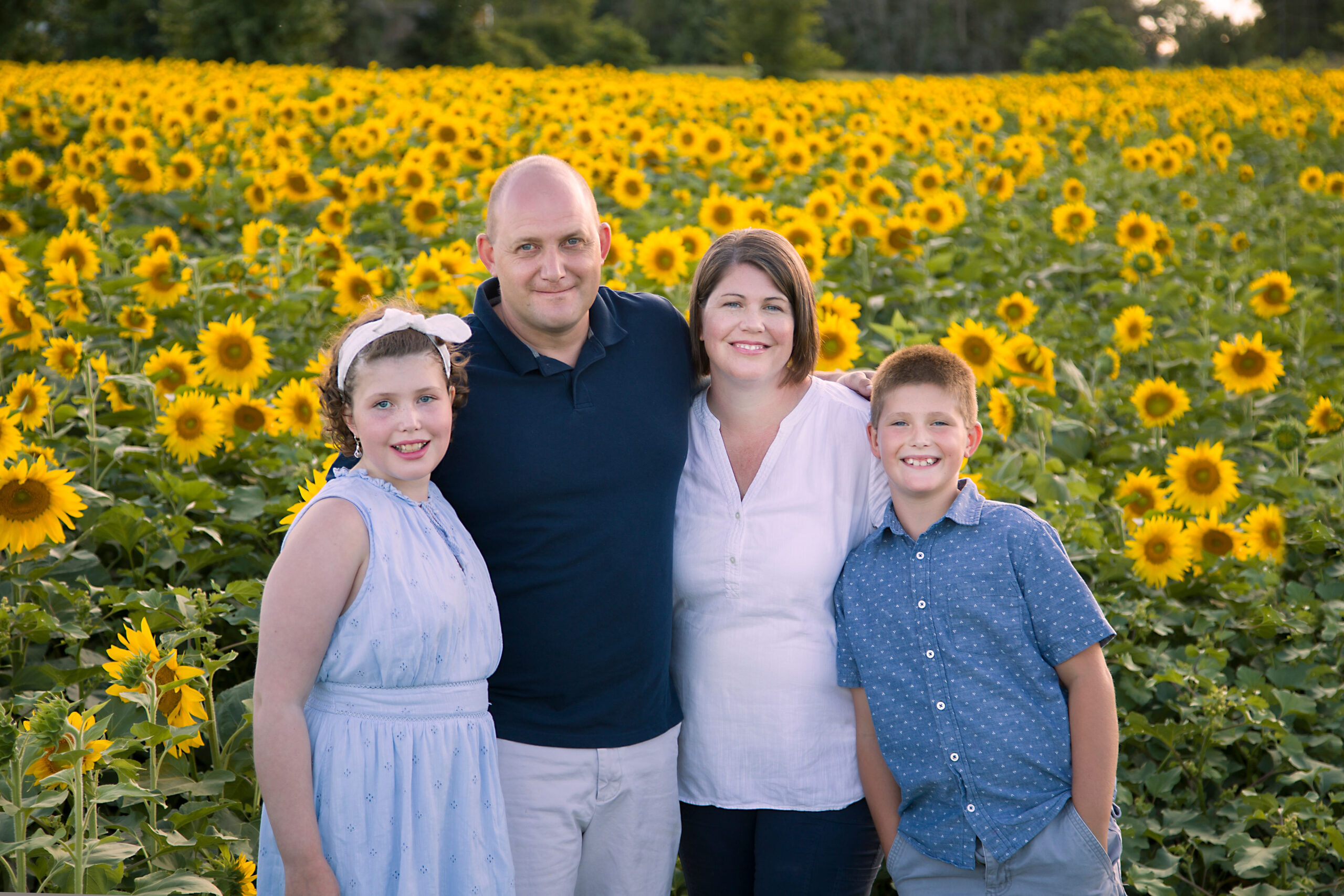Olivia Helps Out: From Spreading Holiday Cheer to Advancing Science

When the headaches began, Olivia knew. All three times that her cancer had returned, she didn’t need tests or lab results to give her the news. The headaches sent the message loud and clear. The piercing headaches were back once again in 2019, and the 12-year-old from Ontario, Canada, knew that another round of treatments had not worked.
Olivia grew up in a small town outside of Hamilton, Ontario, and always found ways to be helpful. She loved to bake – cookies, cakes, pies, you name it. She also enjoyed knitting, including new pillowcases for her family when they moved from town to her grandparents’ nearby farm. Despite being unable to drink the unpasteurized milk from the family cows, Olivia even helped tend to them and do other chores around the farm.
She was first diagnosed with acute lymphoblastic leukemia in 2014 at the age of seven. Olivia’s doctors thought she had strep throat or maybe an ear infection. But those symptoms were accompanied by unexplained leg pain, and her mother recognized the signs might indicate a more severe diagnosis and asked her doctors to do bloodwork. Sure enough, the results confirmed her worst fears.
Her parents and doctors acted quickly and sent her to McMaster Children’s Hospital in nearby Hamilton, where she underwent chemotherapy and radiation. For a while, it put her in remission. But before long, the headaches came.
“When I was initially diagnosed, I didn’t have these headaches,” Olivia remembered. “But each time I relapsed; it was in my central nervous system. So it caused very bad headaches, which is how I would realize I had relapsed.”

Olivia and her family
Another lengthy course of chemotherapy proved unsuccessful in the long run. This second relapse sent Olivia and her mother to the Children’s Hospital of Philadelphia in the United States. This time, the treatment was CAR-T cell therapy, an infusion of CAR-T CD19 cells.
CAR-T cell therapy involves doctors taking out T-cells – part of the immune system which help protect the body from infection and fight cancer – from a patient. Overwhelmed by cancer cells and unable to effectively do their job on their own, the T-cells are then engineered in a lab to produce proteins on their surface called chimeric antigen receptors, or CARs. Doctors then reinfuse those CAR-T cells back into the patient, where they recognize and bind to specific proteins or antigens on the surface of cancer cells and kill them.
“The cells can be programmed to get to places that chemo can’t,” Olivia explained, showing an understanding of the science that belied her age. “Places like the central nervous system. Chemo can’t get past the blood barrier surrounding the brain, for example, but CAR-T cells can. That has opened up a lot of new things for cancer treatments.”
Unfortunately, it wasn’t so simple in her case. “The CD-19 cells put me in remission, but it wasn’t working for long. The traces of CD-22 were stronger than CD-19 [in my cancer cells]. So, we went to the NIH hoping that they could get me into remission so I could come back to Canada for a bone marrow transplant.”
When Olivia relapsed for a third time, realizing that the cellular engineering done in Philadelphia was not right for her, there was still hope. A trial was underway at the National Cancer Institute at the National Institutes of Health that dealt with the specific genes that were prevalent in Olivia’s cancerous cells, CD22.
Olivia and her mother journeyed to Bethesda in late fall 2019, where they would stay for two months at The Children’s Inn at NIH.
Their trip fell during the holiday season, and despite her illness and anxiety, the young girl who always found ways to help out at home decided that she would find ways to help brighten the season for those around her at her home-away-from-home at The Inn.
“The programming team was constantly doing things to get ready for Christmas, so I would go with them to help find Christmas presents for the younger kids at The Inn,” Olivia explained. “That’s the kind of stuff I love to do. I love to be helpful and keep busy.”
There were traditions from back home that she would be missing that year, but for Olivia, who was not even a teenager yet, the focus was on ensuring that the younger kids around her had the best holiday season they could have.
“The Children’s Inn really did help me stay positive through my treatment,” she recalled. “I remember Santa Claus coming in, and I got to watch the little kids sit on his lap. And that was so much fun for me to watch them and help out. That was a lot of help when I was missing my small-town traditions.”
Typically, when CAR-T cell therapy is successful, it is accompanied by painful and debilitating illness. That wasn’t the case with Olivia. But just as she knew a headache signaled a relapse occurring, she could sense that despite the lack of telltale side effects, the treatment had taken hold in her body. And on Christmas Day, Olivia and her family got the best present they could imagine.
“On Christmas Day, [my doctors] called to tell us that the treatments had worked,” she smiled. “They had told me that without the side effects, it probably hadn’t worked, but it had. They said that I was pretty much the only kid to have gone through it successfully without side effects.”

Olivia decorating the tree at Christmas. It was Christmas Day when she found out that the CAR-T therapy had worked.
There was still a bone marrow transplant to undergo at The Hospital for Sick Children in Toronto. There, as is common, she did not avoid side effects altogether, developing graft vs. host disease. It has led to minor complications in her life, but she perseveres. And more than three years after her third relapse and nearly a decade after her initial diagnosis, Olivia remains cancer-free.
Throughout her medical journey, no one has been more in tune with what was happening inside Olivia’s body than Olivia herself. From recognizing the signs of trouble to being an active participant in conversations with her doctors to being the first to know the CAR-T CD22 treatments had worked, she has tackled her medical issues with poise and confidence even at a young age. And all along, she found ways to leave her mark. In just two months, Olivia played a meaningful and memorable role in improving the lives of those around her at The Children’s Inn, even during some of the most stressful days of her own life. Her doctors remain confident that no further treatments or return trips to the NIH will be necessary, but the lasting impression of kindness and strength Olivia left at The Children’s Inn at NIH will remain.




